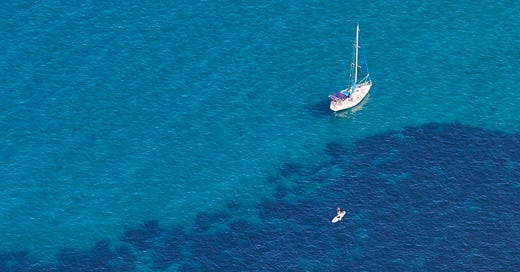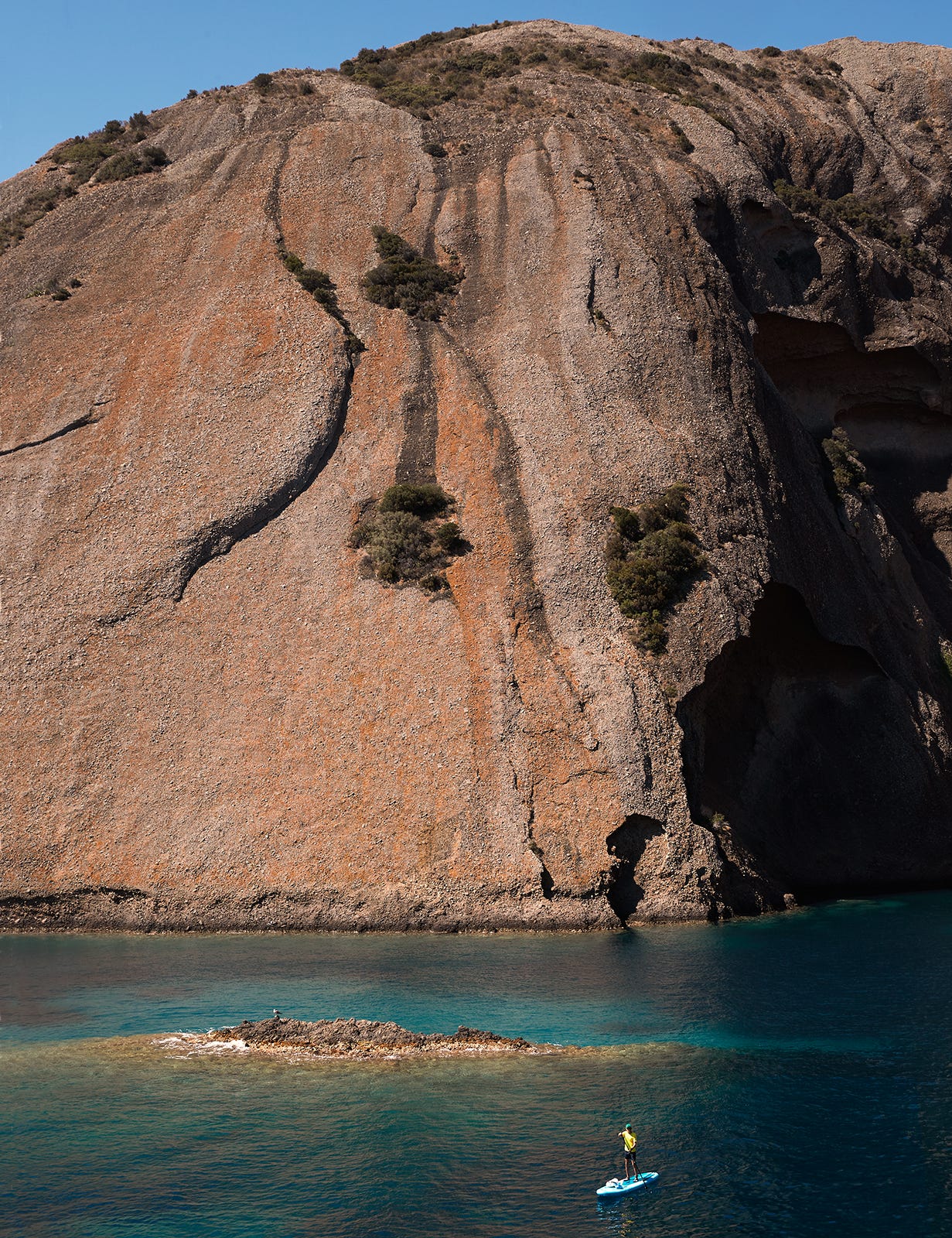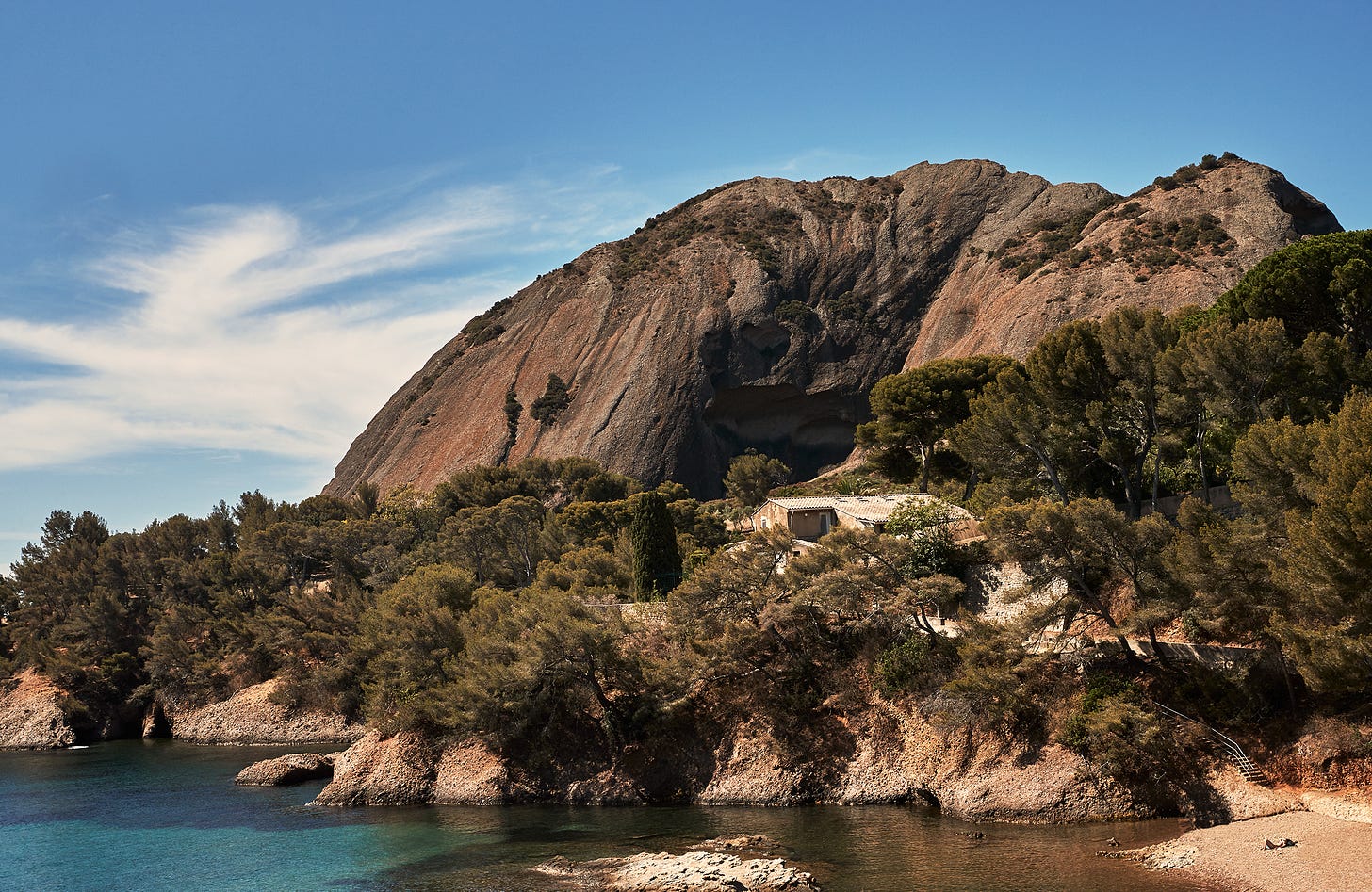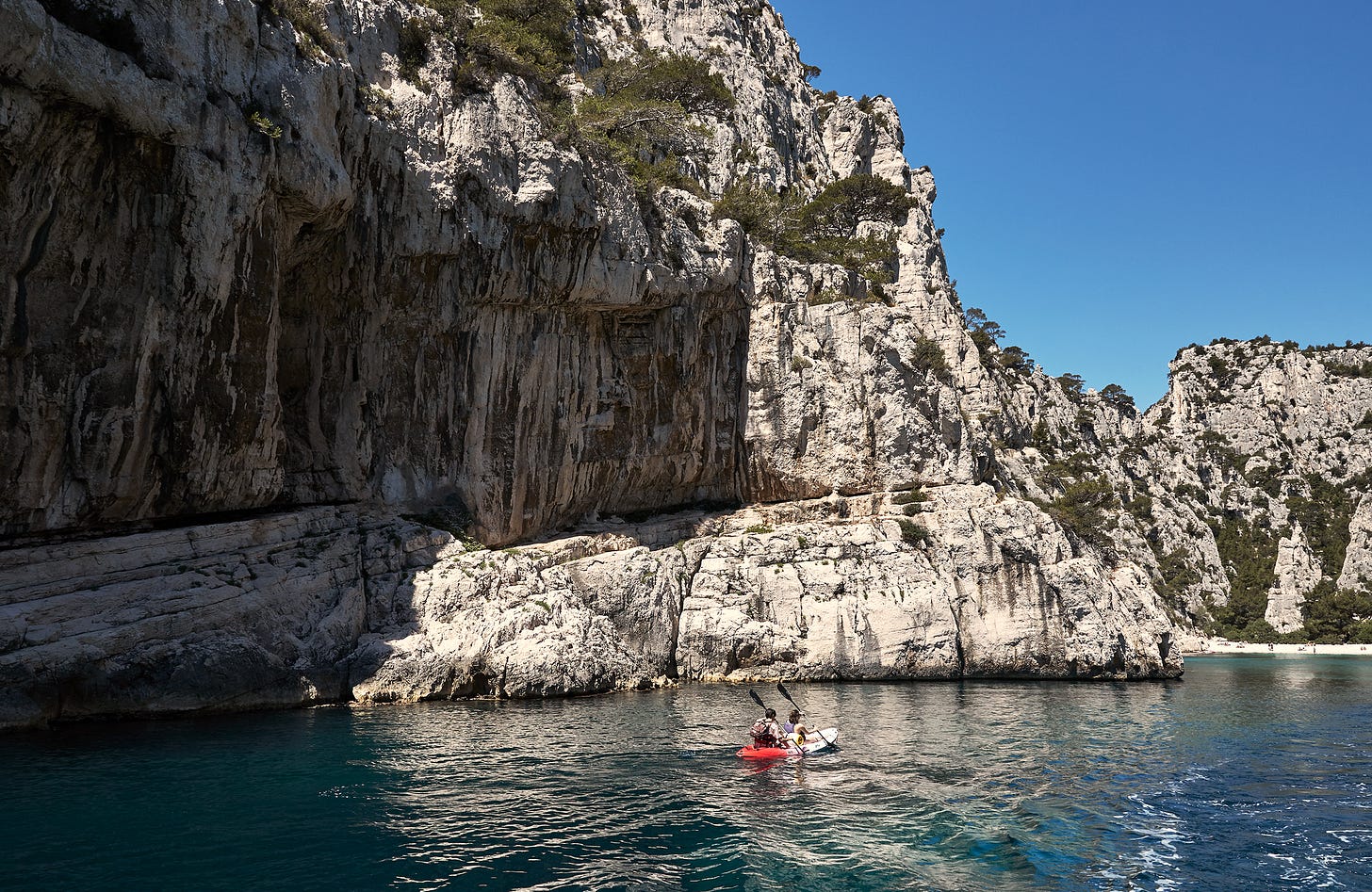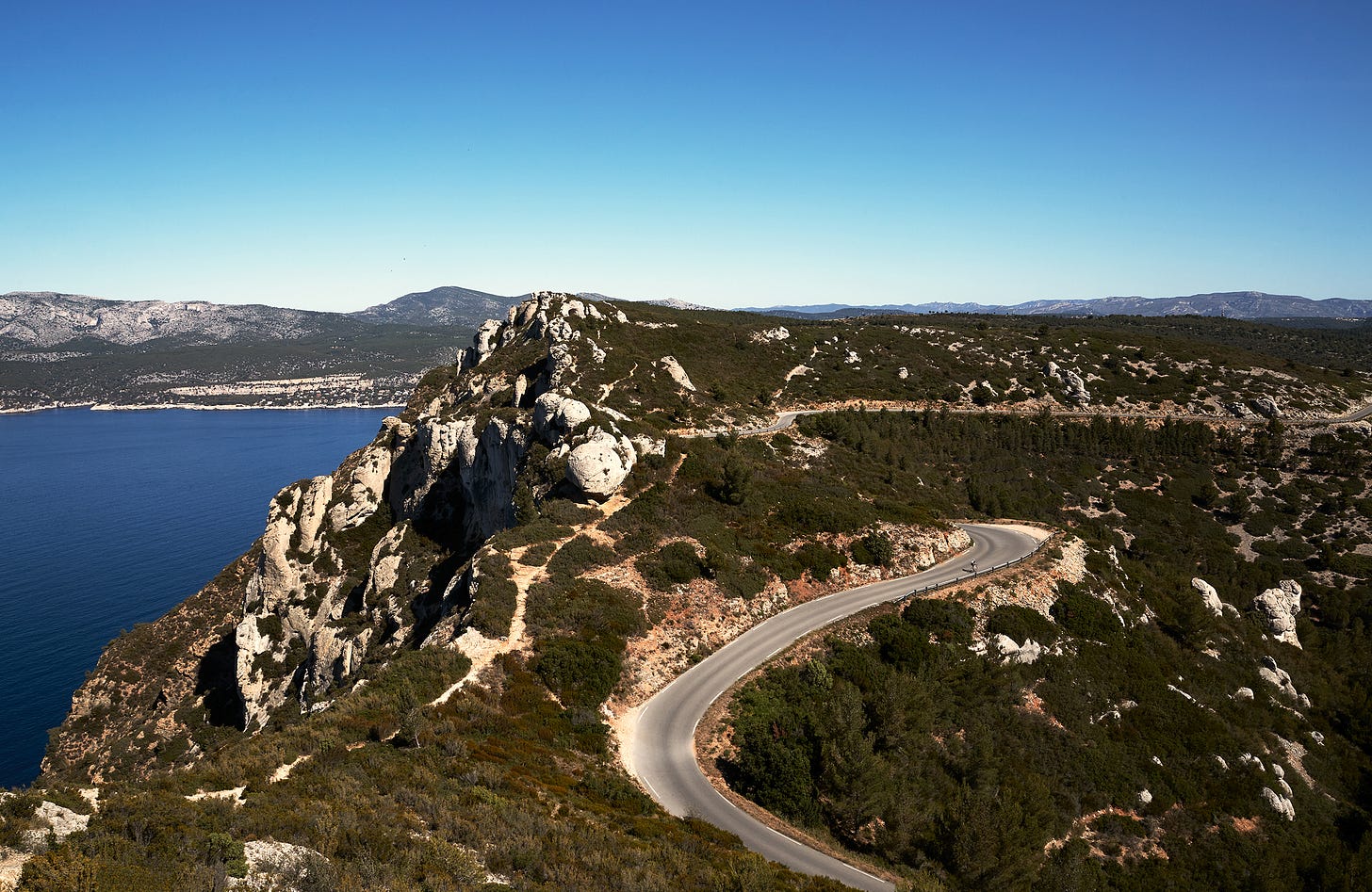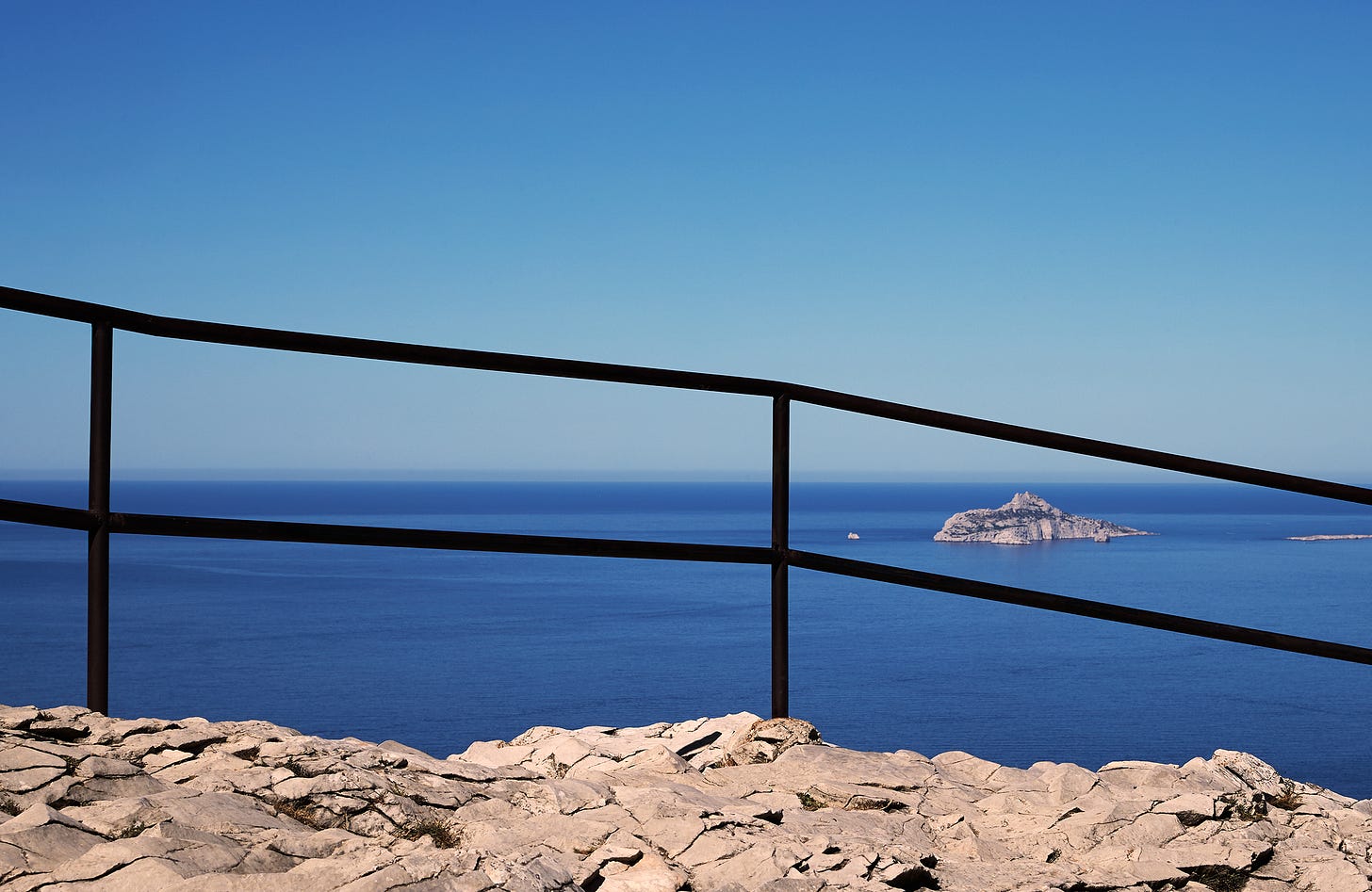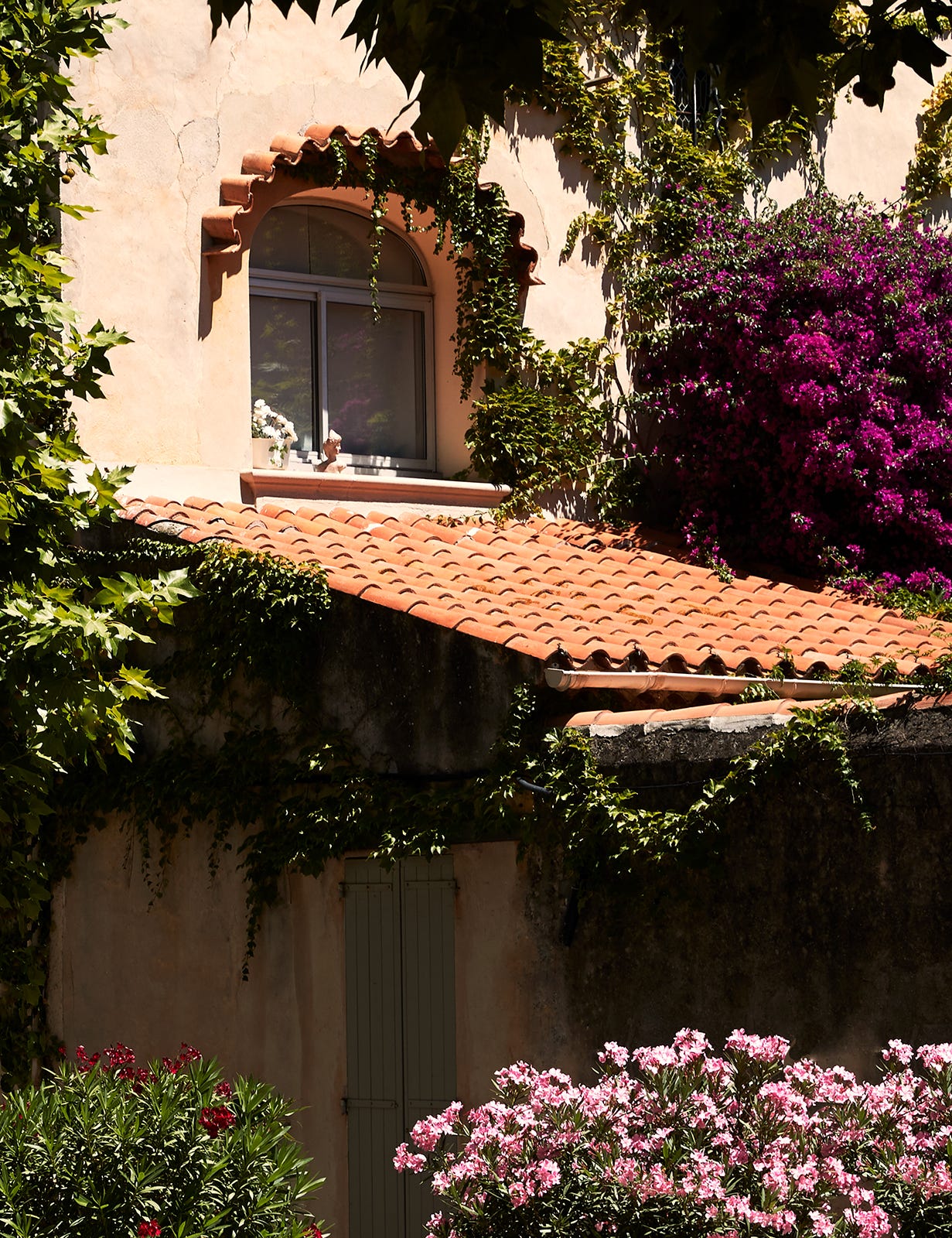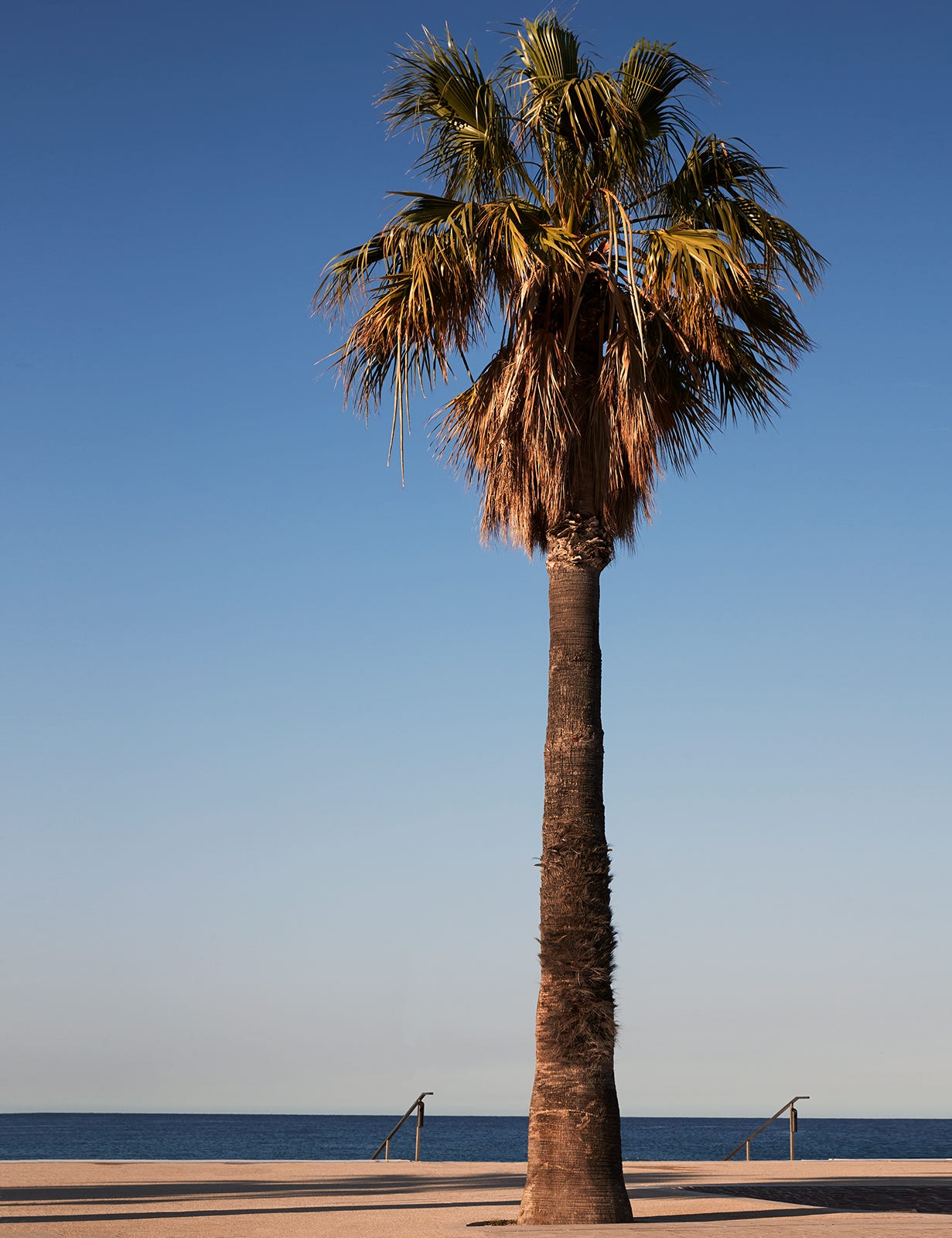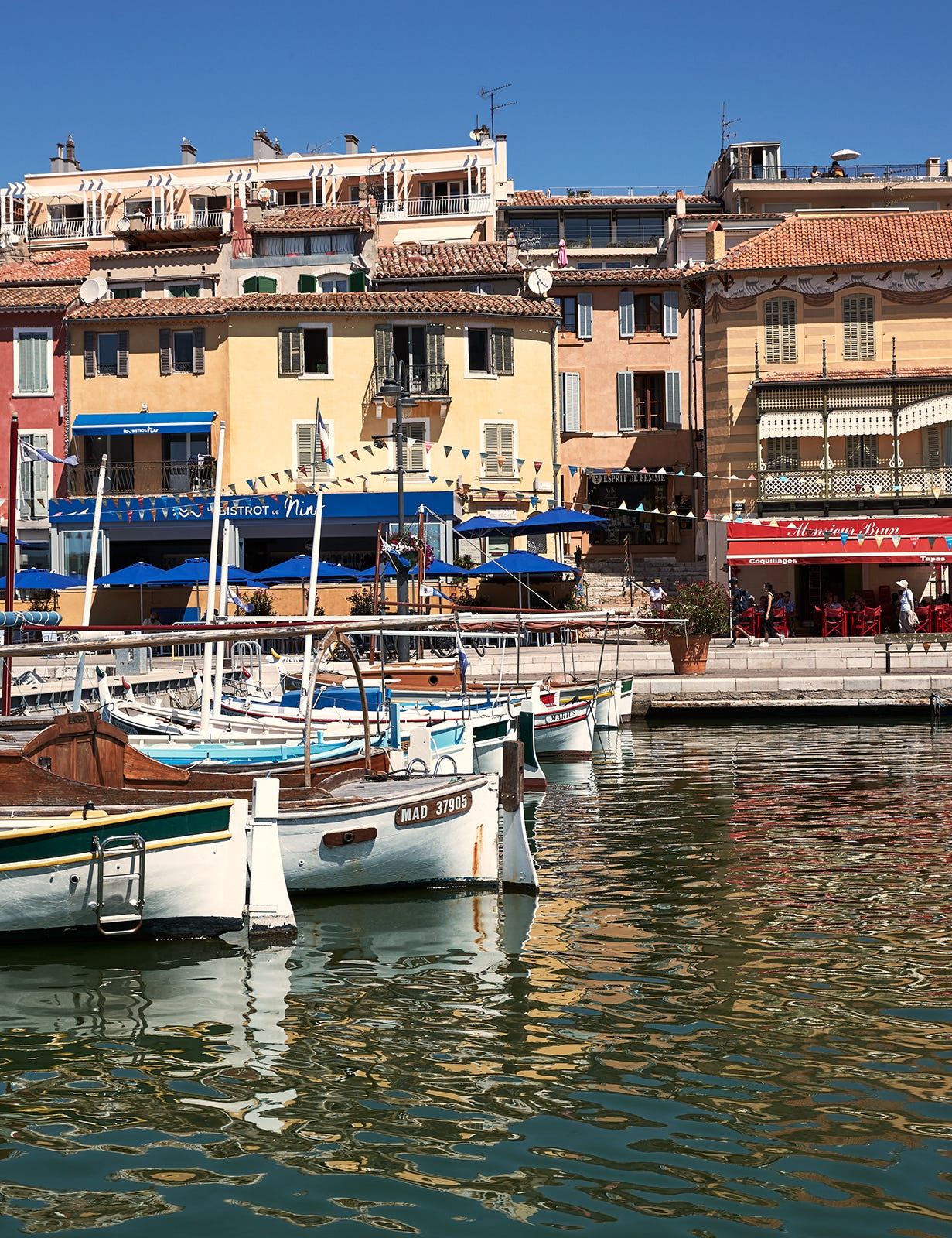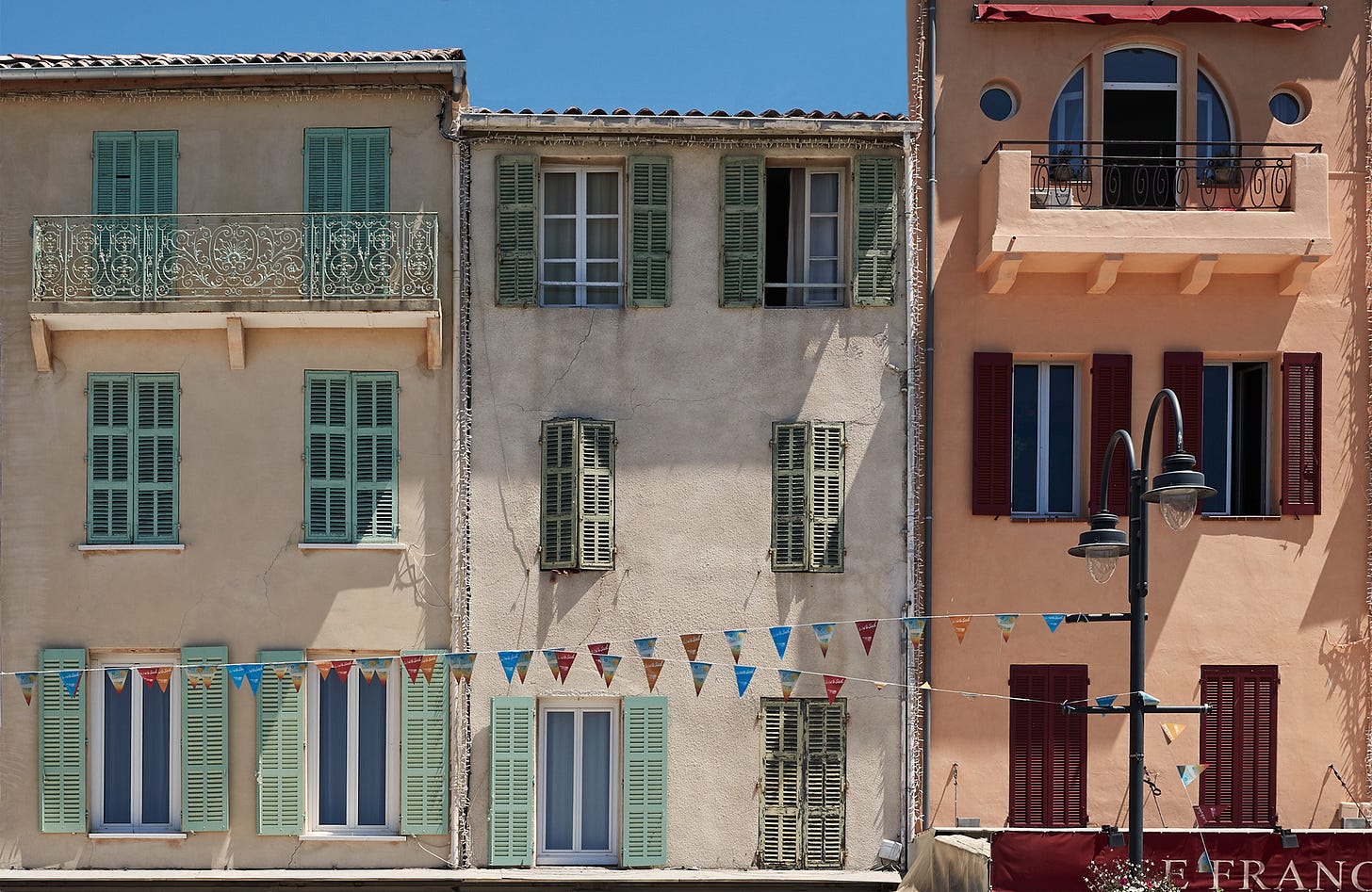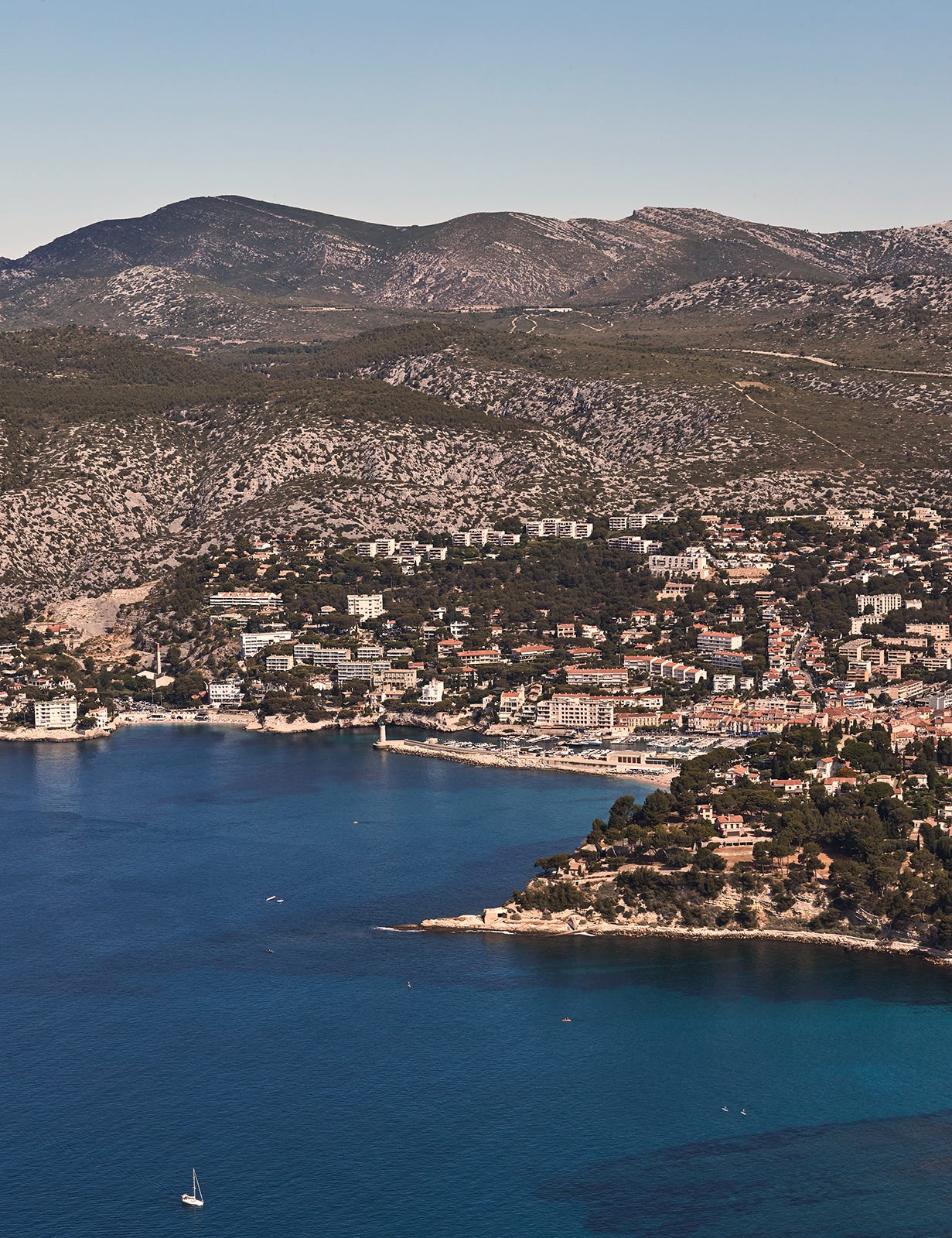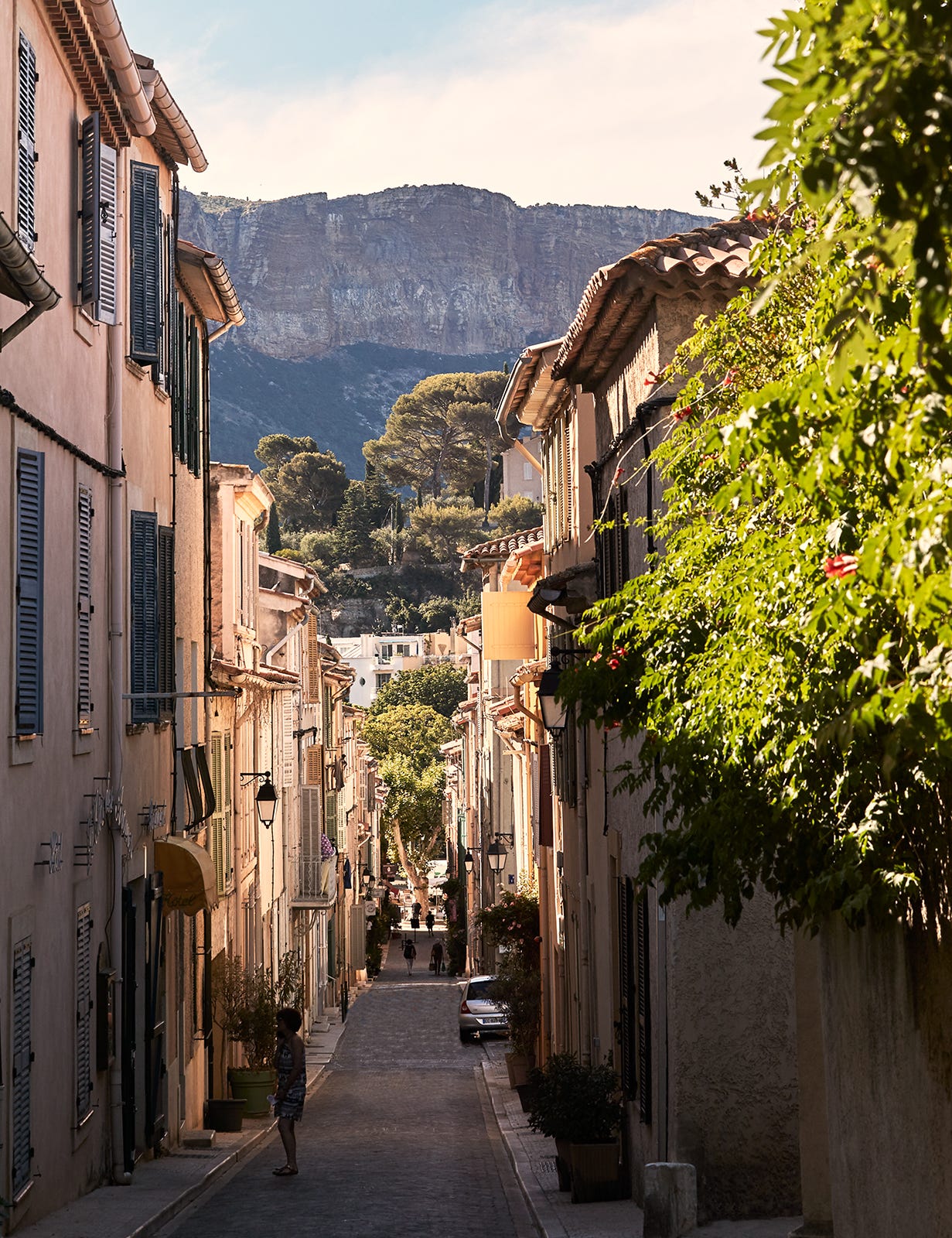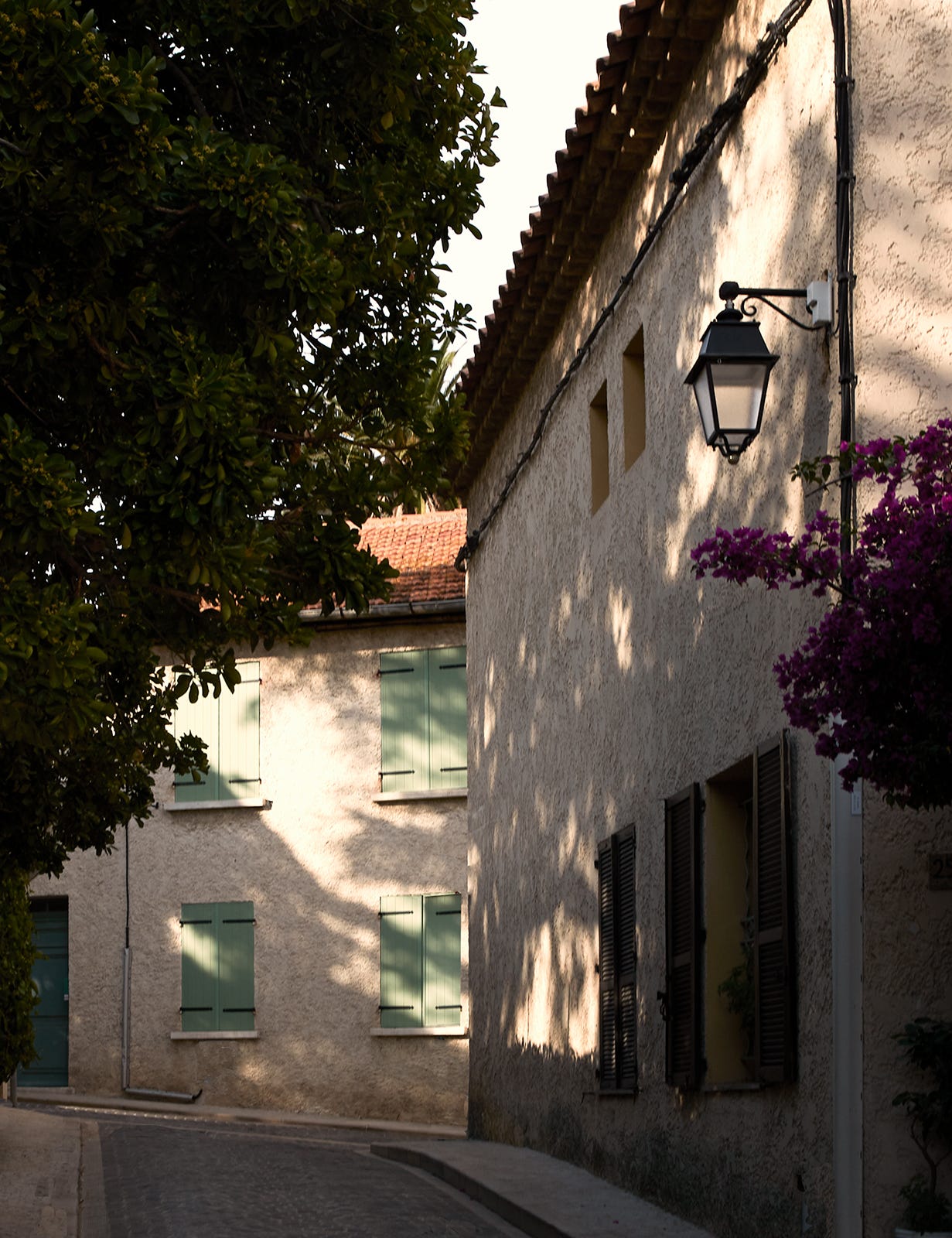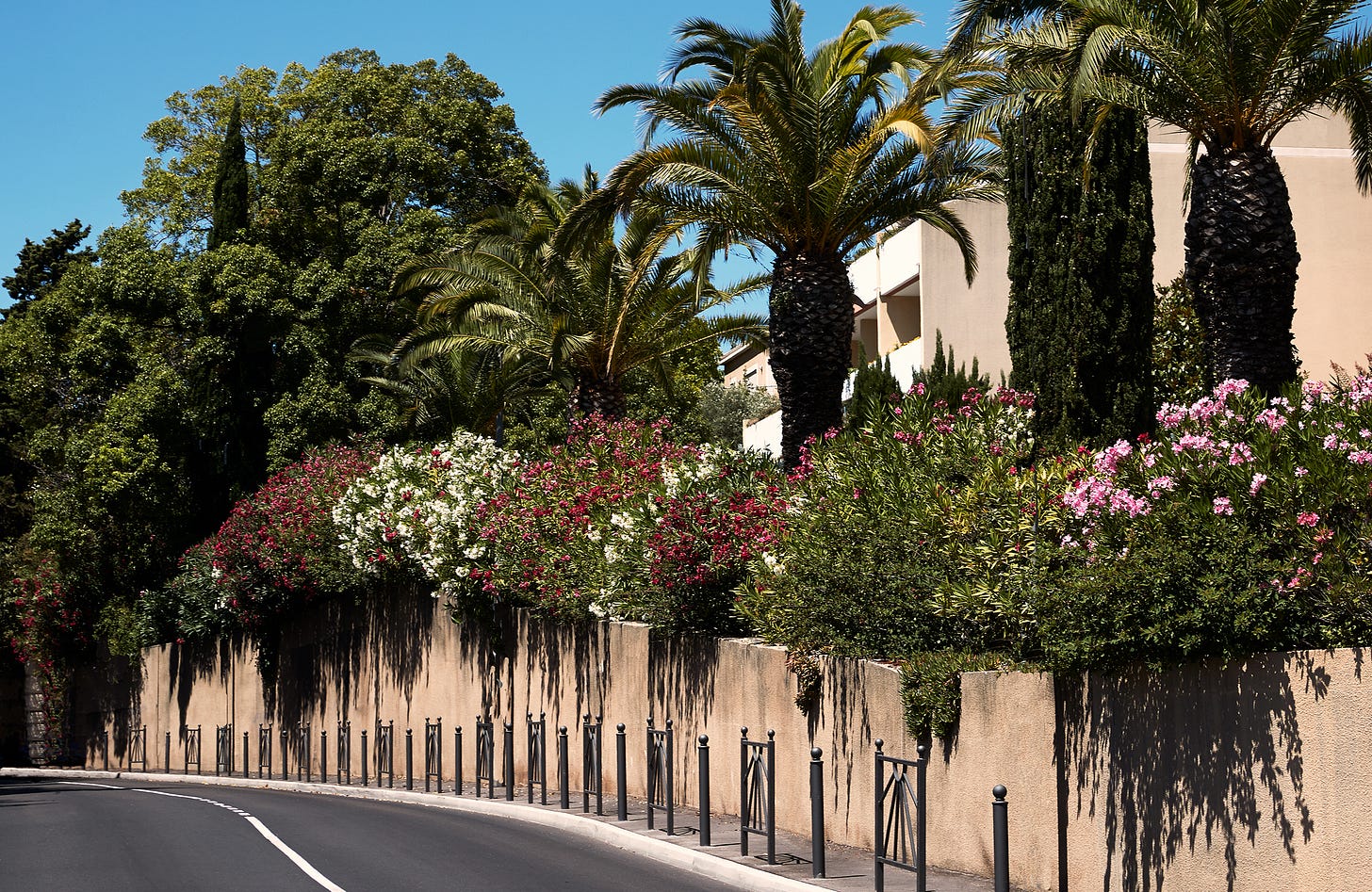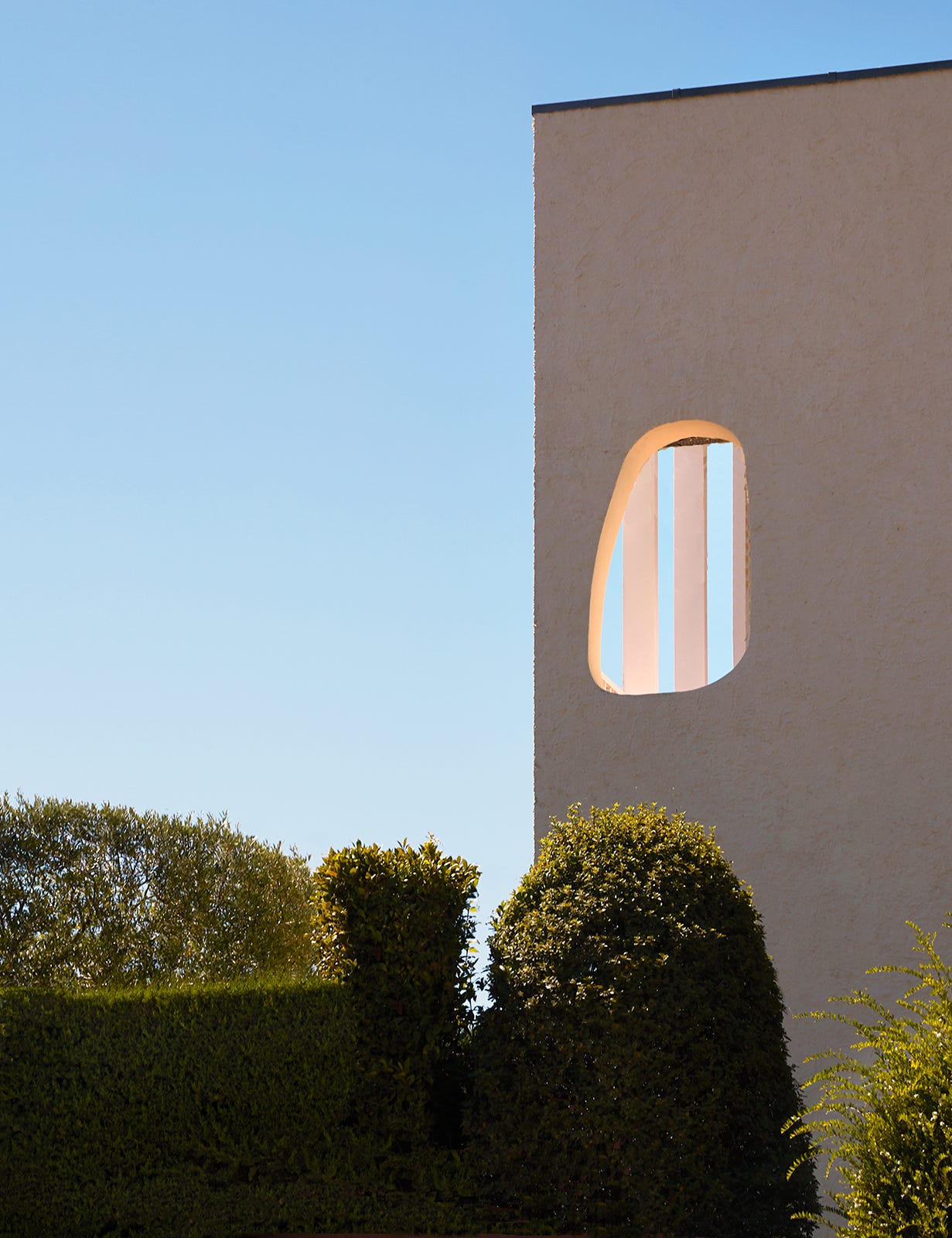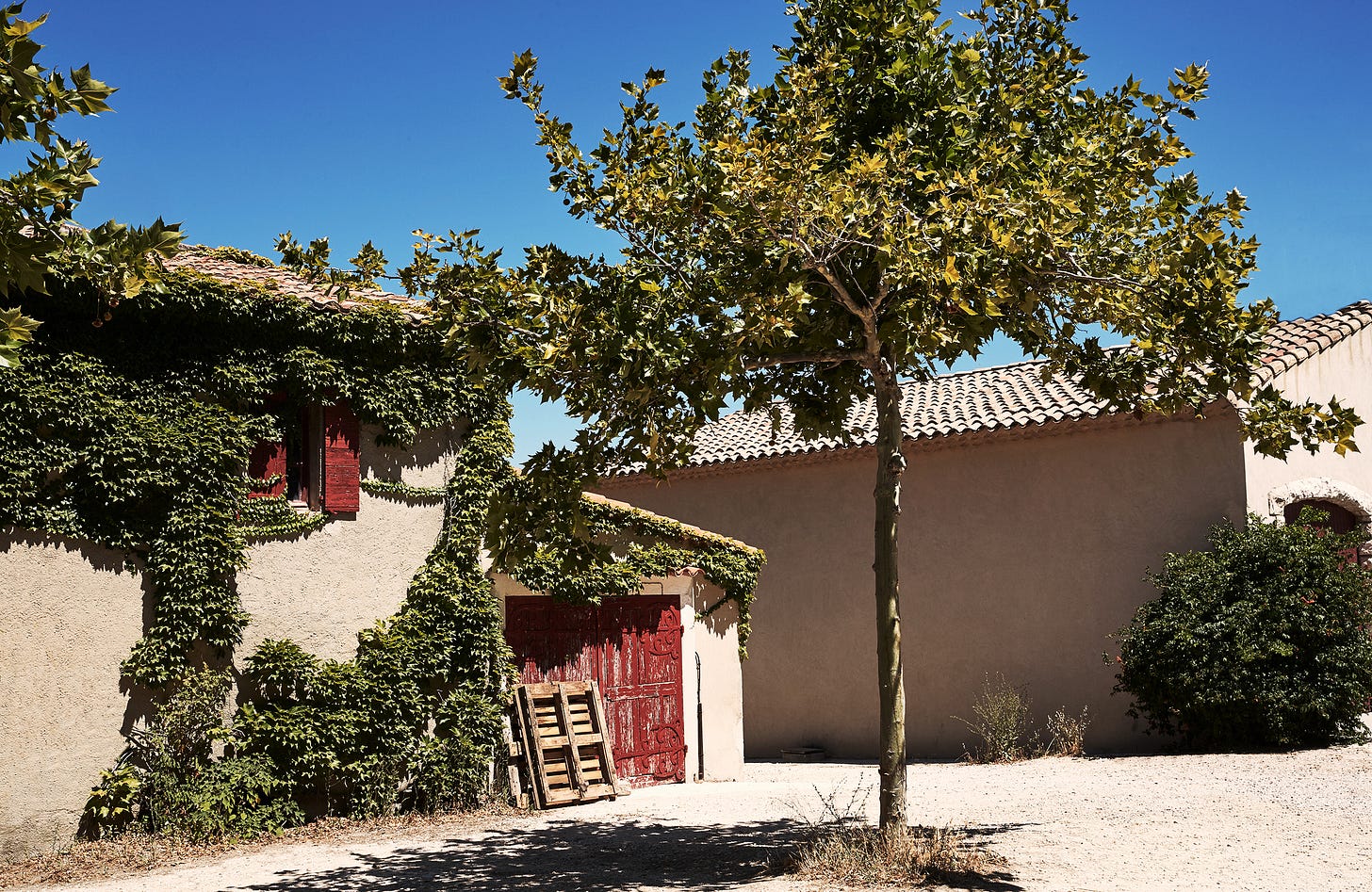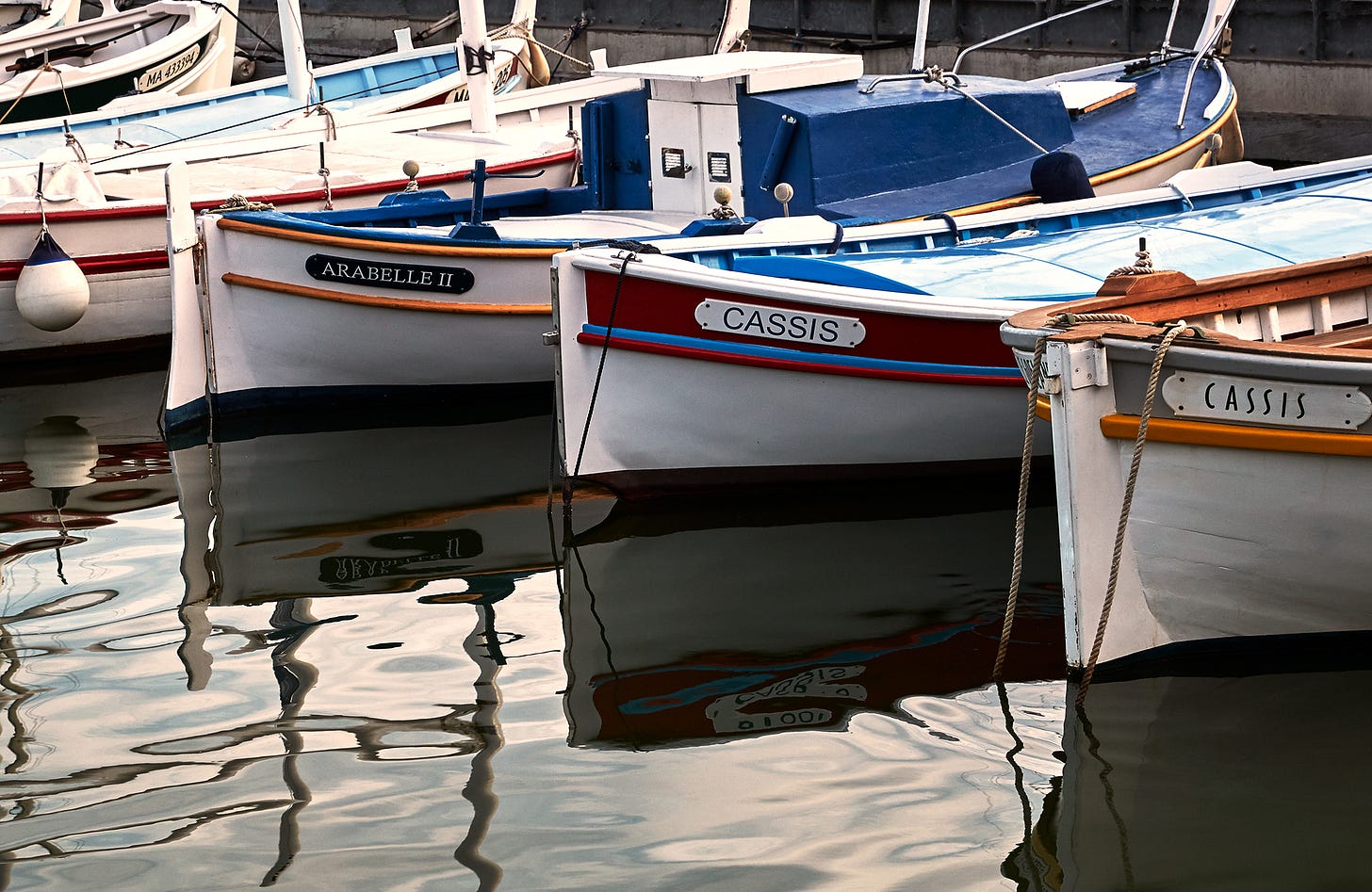Cassis is synonymous with the natural phenomenon calanques, French for a narrow, steep-walled inlet developed in limestone or dolomite (or other carbonate strata). They are found all along the Mediterranean coast, but the ones around Cassis, part of the Massif des Calanques, are amongst the most magnificent. The highest point is located at Mont Puget (565 m), creating a dramatic contrast between the steep cliffs and the turquoise water below, while Cap Canaille is one of the tallest cliffs in Europe (at 400 m).
The calanques attract many visitors to Cassis. They come to walk, climb or trek in the mountain areas around the small fishing village, or to rent a boat and view the cliffs from the sea. Soil is almost non-existent in the calanques, and so they have developed a particular ecosystem, where roots of plants find places to grow in cracks in the limestone. More than 900 plant species have found a way to survive like this.
The limestone has been an important natural resource, and for many years it was a major export, used in massive building projects like the Suez Canal, connecting the Mediterranean with the Red Sea, the base of the Statue of Liberty outside of New York and Place du Trocadéro in Paris. It’s difficult to imagine that the natural resources of this quiet town have reshaped international infrastructures and are part of some of the world’s most famous monuments.
Many other similar towns have been transformed from sleepy fishing villages into commercial tourist destinations, but in Cassis, the old world-charm is still present, and so a good idea is to stay at least a few days or even longer; a week or two, maybe even three or four.
Around town, there are signs posted stating that when you leave the beach, make sure that you are suitably covered, or else you will risk being fined. This is just a small indication of a general attitude, where negative influences of mass-tourism are consciously delimited, in order to maintain a sense of normalcy for those who live and work in Cassis. This is also what makes Cassis a unique experience in the south of France – it’s not primarily a place designed for tourists, but rather a place that has made accommodations for visitors, while still remaining more than anything a home for those who live there.
The area has been inhabited since prehistoric times, which is not difficult to understand: The Mistral brings cool temperatures from the sea, the rock formations are magnificent and the sea is crystal clear. Even the name Cassis has an ancient history. In The Antonine Itinerary (in Latin: Itinerarium Antoni Augusti, a collection of documents from the time of Emperor Augustus describing the roads of the Roman Empire), it was spelled Carsicis. “Kar” referred to rock or stone, while “sit” (or “set”) alluded to a place by the sea.
The town centre has remained more or less unchanged for decades, in some parts of Cassis even for centuries, which creates an atmosphere of tranquillity and calm. The narrow roads and stone houses look the same as when they were first built, and will probably look the same for the coming few hundred years as well.
Probably, the town today is similar to what Virginia Woolf saw when she would come to visit her sister Vanessa Bell, who lived here with artist Duncan Grant in a small ochre-coloured villa, called La Bergère (“The Shepherdess” in English), in the middle of a local vineyard. Woolf enjoyed the mild climate, and the lazy days that come as a natural effect of hours spent in sunshine and warmth:
“Absolut heaven. The sun and the hills put my dear London rather in the shade – and then one does exactly what one likes here.”
Where to Stay
Maison°9 – Charming B&B just outside the town centre. With an outdoor pool.
9 Av. du Dr Yves Bourdes
Chàteau du Cassis – Comfortable and classic in a secluded château milieu.
Chem. des Lombards
Hôtel Les Roches Blanches – Art Deco hotel a few steps from the centre of the town, with an outside pool and its own spa. Winston Churchill used to paint from the terrace of his favourite room here.
9 Av. des Calanques
Where to Eat and Drink
Chez Albert – Cozy restaurant in the centre of the town. Great service and food.
19 Rue Michel Arnaud
La Villa Madie –Fine (but unpretentious) dining with two Michelin-stars.
Avenue du Revestel
Chez Gilbert – Classic seafood restaurant with panoramic views.
19 Quai des Baux
Restaurant le Patio –Informal restaurant with friendly atmosphere.
11 Rue Brémond
Divino – Great bar and excellent wine shop
3 Rue Alexandre Rossat
What to Bring Home
Cassis is known for its viticulture, and there are many excellent wine shops that sell wine from local producers. As the Cassis wine area is quite small, it is not always easy to find wine from these producers in other places, and so it is a good idea to buy a few bottles to bring back home.
Domaine Paternel
Close to 90 percent of all wine from the Provence region is rosé, but there are still some parts – such as Cassis – where the rosé is rivalled by other wines (at least in some of the 215 hectares that comprise this appellation). In 1936, when France’s appellation system was created, Cassis was one of the first to be recognized, as this is home to some of the finest white wines in Provence.
Of all AOP Cassis wines, white wines today make up 67 percent, rosé accounts for 30 percent with red wines at three percent.
The ancient Greeks of the city of Phocaea were the first to plant vine stocks in the bay of Cassis (probably an Ugni blanc). When the Greeks had been defeated, the conquering Romans continued planting vines in the region.
Already from the beginning, the wine farmers of Cassis specialised in white wines. At first, it was generally sweet Muscat wine, but in the late 19th century, due to the devastating phylloxera infestation, they (as many others across France) had to plant new vines from grafted American rootstock, gradually shifting to dry white wine.
The Cassis vineyards are the only vineyards in France to be completely encompassed by a national park.
The Santini siblings – Olivier, Jean-Christophe and Laetitia – are the third-generation vignerons to oversee the family’s Domaine du Paternel, based only a few minutes outside of the town of Cassis. Because of this location so close to the bay, it is open to the sea, which regulates the temperature. The vineyard is about 50 hectares and produces 300,000 bottles annually.
Since 2012, all wines are certified organic. They also collaborate closely with Bernard and Monique Piche who produce (white and red) organic wines, under the label Domaine de la Couronne de Charlemagne.
Domaine du Paternel
Blanc de Blancs AOP
A blend of Marsanne, Clairette, Ugni blanc and Bourboulenc, decidedly marked by the closeness to the sea, with its trademark minerality together with a tone of lemon.
Domaine du Paternel
Rosé AOP Côte-de-Provence
A crisp, light and elegant rosé, the grapes are harvested manually and come from the Saint-Cyr-sur-Mer vines, certified organic since 2019. The main varietal is Grenache grapes, combined here with Cinsault, grown on large expanses of clay-limestone soil.
Domaine du Paternel
Rouge Grande Réserve AOP Bagnol
A blend of Mourvèdre, Grenache, Carignan and Syrah, this red wine has a complex structure with berry aromas. The vines are cultivated in Saint-Cyr-sur-Mer and Le Castellet, which are mainly hillside plots.
Domaine du Bagnol
The presence of vineyards in this region is of great importance, not only for financial reasons or because it brings great qualities to the landscape, but also geological, as the vineyards operate as a barrier against dangerous fires.
The vineyards in Cassis are all located on the Cap Canaille, which is the highest sea cliff in France.
Consisting of approximately 210 hectares, it is limited in size compared to other regions, with only twelve active vineyards (together producing one million bottles of wine per year).
The constant sea breeze keeps the plants healthy, while 3,000 hours of sunshine adds character to the wine.
Most of the wine producers of Cassis have taken on a holistic approach to making wine, and currently 75 percent of all wine produced here is organic.
The vineyard that is considered the very best is Domaine de Bagnol. Owned and operated by the Genovesi family since 1997, the vineyard is situated just outside of the Cassis town.
Completely organic since 2010 and certified as “Agriculture Biologique” since 2014, they are more famous for their white wines (out of their 23 hectares, 15 are used for white wine).
Wine has been produced on this land since at least 1430, making it one of the oldest wine-growing areas in the region.
Domaine du Bagnol, Cassis Marquis de Fesques blanc
Considered one of the “grands vins de Cassis”, the Cassis Marquis de Fesques blanc from Domaine du Bagnol, it is a blend of Marsanne, Clariette and Ugni blanc, aged in oak barrels which makes it a perfect white table wine.
Domaine du Bagnol, Cassis blanc
A fresh white wine with mineral components. As is the case with many Cassis wines, the proximity of the vineyard to the sea is noticeable in the taste, which makes it a good combination with clams, oysters or scallops.
Clos Sainte Magdeleine
The 44th generation of his family to grow wine, Jonathan Sack is proud of the biological wine he grows and cultivates at Clos Sainte-Magdeleine, in the outskirts of Cassis.
The vineyard, situated almost on the beach, has perhaps one of the most beautiful locations of all vineyards in Provence, and the proximity to the sea giving the wine a particular fresh taste, sprinkled with salt.
The fields are ploughed by horses, an ancient practice with many advantages, neutralising the carbon footprint while connecting flora with fauna.
For thousands of years, this was an integral part of farming, and since 2020 brought back to Clos Sainte-Magdeleine.
Natural fermentation, which at Clos Sainte-Magdeleine is used for rosé and white wines, is part of Jonathan Sack’s aim for the vineyard to release less CO2. In many ways, he relies on the knowledge of previous generations regarding how to produce the best quality wine, while also applying new insights into how to create the most environmentally friendly product.
On this site, wine has been produced since the 12th century, making this a historic vineyard in Provence, its terroir made up of sandstone and sandy marl, a soil known to produce great dry, white wines.
Here, the elements – water, earth, light and winemaking – all come together, creating wines with a strong, mineral identity, reflecting the natural conditions of a vineyard in Cassis, perched in between the ocean and the mountains.
The wines of Clos Sainte-Magdeleine can be had just as they are, or to be forgotten for several years in the cellar.
Clos Sainte-Magdeleine AOC Cassis, Blanc cuvée “Bel-arme”
Wine from a selection of old wines, and the great white wine of Clos Sainte-Magdeleine.
Clos Sainte-Magdeleine AOC Cassis, Blanc tradition
A dry white wine, with plenty of minerals, made from indigenous yeast.
Clos Sainte-Magdeleine AOC Cassis, Rosé
A very fresh rosé, with the traditionally light taste of Provence rosé wines.


